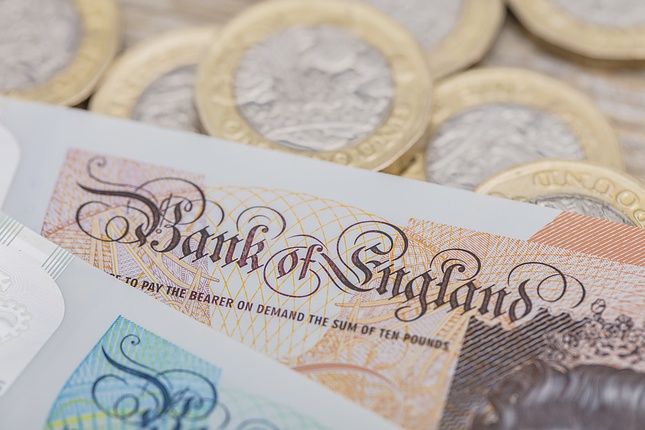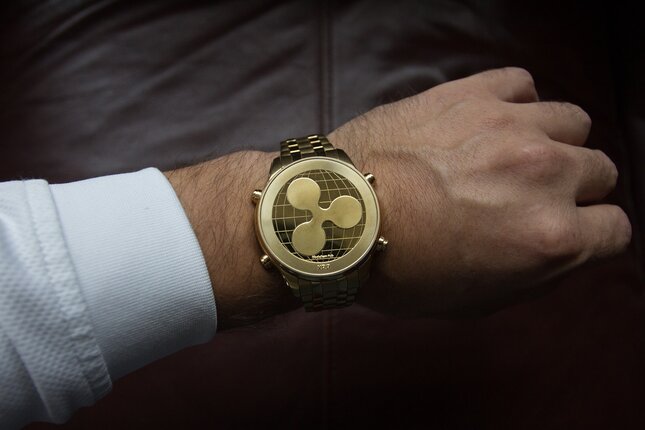Overview: It is ironic that a few months ago, many wanted to sell the dollar because the Republican president and vice president candidates said they wanted a weaker dollar. With the election drawing near and the race very tight, there has been a surge in the betting markets of a Trump-Vance victory, and this has corresponded with the dollar's dramatic rise. US rates held on the lion's share of their gains despite the sharpest loss in the S&P 500 since early September to cap the three-day slide. Still, the greenback is consolidating today, and seeing some of its recent gains pared against all the G10 currencies. And all but a few Asia Pacific currencies and the Russian ruble are firmer, too.
Corrective forces are also evident in global stock and bond markets. Asia Pacific equities were mostly lower, following the losses in the US yesterday. But helped by stronger earnings reports (see Tesla, for example) US S&P 500 and NASDAQ futures are 0.4%-0.7% higher and Europe's Stoxx 600 is also snapping a three-day drop. Bonds are being bought too. Japan and Australian 10-year benchmark yields slipped almost two basis points, while European yields are off 3-4 bp. The UK Gilts are an exception. There the yield is up nearly three basis points. The 10-year Treasury yield is off more than five basis points to 4.19%, leaving it still 11 bp higher on the week. Gold appeared to post a key reversal yesterday by setting a record high and then closing below the previous day's low. However, there has bene no follow-through selling, and gold has recovered for $2715.55 at yesterday's close to approach $2740 today. December WTI is at an eight-day high, pushing above $72.20.
Asia Pacific
Since the low set on September 30 near JPY141.65, the US dollar has surged more than 8% against the yen, which if sustained, would be the largest monthly gain since August 1995. From early June through early July, the greenback rallied about 4.8% and Japanese officials climbed the intervention ladder to large scale, initially unconfirmed intervention. We argue that what has made BOJ intervention appear effective is that officials sold dollars in a falling US rate environment. This was true in intervention in September 2022 and earlier this year. A consensus appears to have been formed that no matter the US election results, a larger budget deficit will result and higher US inflation. The US 10-year yield has risen by nearly 65 bp since mid-September to almost 4.25%. Although we argue that the due to its prior views and positioning, the market exaggerated the significance of the stronger than expected September employment data. Even if we are right that the October report will be more consistent with the underlying trend of a gradual slowing in job growth, the proximity of the US election and related concerns may prevent a pullback in US yields. Nevertheless, with the weaker yen no longer supporting Japanese equities, verbal intervention should be expected. Meanwhile, neither the Japanese nor Australian markets typically react much to the preliminary October PMI, and today is true to form. While Japan's manufacturing PMI remained below the 50 boom/bust level for the fourth consecutive month, the composite has been above 50 consistently this year but for June. In October, it fell to 49.4 from 52.0. In its new economic projections, the IMF shaved its GDP forecast for Japan to 0.3% from 0.4%. In contrast, Australia's composite PMI remained below 50 for the second consecutive month (49.8 from 49.6). Despite the weakness of the yen, there is practically no chance of a Bank of Japan rate hike next week. The Reserve Bank of Australia meets on November 5, and it is unlikely to be swayed by today's PMI.
The Dollar has surged by about 3% against the Yen this week. It has nearly met the (61.8%) retracement of the intervention/US rate inspired decline from the multiyear high in early July (~JPY162) to the low in mid-September (briefly below JPY140). Speculators in the futures market swung from a net short position of 185k contracts in early July to net long 66k contracts in late September. They have been liquidating over the past few weeks and price action is both a cause and effect of trend followers and momentum traders bailing out. There has been hardly a peep from Japanese officials about the price action. Both Finance Minister Kato and BOJ Governor Ueda had opportunities in the past 24 hours to comment on the yen but refrained. The strong three-day rally has stalled, and the dollar is pulling back from almost JPY153.20, yesterday's high, and has slipped below JPY152 in Europe. Nearby support may be in the JPY151.25-40 area. That shelf the Australian dollar was forging around $0.6655? It was taken out yesterday. The Aussie was sold to almost $0.6620 and settled below the 200-day moving average for the first time since mid-August. It is better bid today and has recovered to $0.6660 before pausing. There is a large option at $0.6605 (~A$1.55 bln) that expires today. The relentless rise of the dollar and yen slump is softening the Chinese yuan, even if there is greater foreign demand for Chinese shares. The dollar approached CNH7.1470 yesterday. As the dollar pulled back against the yen today, it has also pulled back again the yuan and approached CNH7.1165. The PBOC fix has been creeping up. It was set at CNY7.1286 today (CNY7.1245 yesterday).
Europe
The eurozone and UK's preliminary October PMI were uninspiring. The eurozone composite ticked up to 49.7 from 49.6. It was the second consecutive month below 50. So far, the year's peak was in May (52.2). Last October it was at 46.5. Germany's flash PMI was firmer but and the composite rose to 48.4 from 47.5. The French results were softer, and the composite PMI fell to 47.3 from 48.6. The swaps market as about a 40% chance that the ECB cuts rates by a half-point at the December meeting, which, practically unchanged on the day, is slightly lower than at the end of last week. It still seems exaggerated. That said, another negative print on CPI (due next week) could change the assessment. The swaps market has slightly less than 125 bp of cuts through H1 25. In comparison, the Fed funds futures is discounting about 108 bp from the Federal Reserve. The swaps market has 112 bp of easing by the Bank of England over that period. The UK's preliminary October preliminary composite PMI slipped to 51.7 from 52.6 in September. It has not been below 50 since October 2023 when it was 48.7.
The euro took another leg lower yesterday and frayed the uptrend line connecting the April and June lows but managed to settle slightly above it (~$1.0765). It recovered to nearly $1.0810 in the European morning, which seemed to have exhausted the buying. and the intraday momentum indicators warn of the risk of a pullback, with initial support in the $1.0770-80 area. There are options for 1.35 bln euros that expire today at $1.0755. Sterling frayed its trendline connecting the April and August lows found near $1.2910 yesterday, which met the (50%) retracement of this year's gains around $1.2930. Yesterday's low held today, and sterling recovered to $1.2975. Its intraday momentum indicators are more constructive than the euro and the session high may not be in place. It may draw closer to $1.30.
America
US rates and the dollar are unlikely moved by today's data. It consists of the preliminary October PMI, where manufacturing has been below 50 for the past three months, weekly jobless claims (overshadowed by next week's national employment report), and September new home sales (existing home sales unexpectedly fell for the second consecutive month). Instead, the market is focused on the dramatic rise in US rates on ideas regardless of the election outcome, supply of Treasuries will increase, and inflation will rise. The measure of bond market volatility (MOVE) is at new highs for the year. The Bank of Canada delivered the 50 bp cut that was largely discounted, though it did not prevent the Canadian dollar from extending its losses. Its economic forecasts were unchanged from July. It expected the economy to grow by 2.1% in 2025 with 2.2% CPI. Governor Macklem characterized the economy as "excess supply," with "soft" labor market. Mexico reports inflation for the first half of October. The weaker peso may have lifted the headline inflation by the most in three months (~0.4%), The core rate has typically been firmer in the first half of a month than the second half. This pattern has held in all but three months since the start of last year. The swaps market has about a 1-in-3 chance of a cut discounted over the next month. The meeting is November 14.
The combination of a 50 bp Bank of Canada rate cut and the broader risk-off environment weighed on the Canadian dollar yesterday, but it slipped around 0.15%, making it the strongest of the G10 currencies. Still, the greenback reached new two-and-half month highs near CAD1.3865. It is consolidating today and is likely to find support ahead of CAD1.3775. As the Loonie was the strongest in the G10, the Mexican peso was the strongest among the emerging market currencies yesterday, rising 0.5%. The greenback initially reached almost MXN20.10 before reversing lower and falling through MXN19.86. It is the third time the last five sessions that the dollar traded above MXN20.00 on an intraday basis and has been unable to close above it once. The greenback held above Tuesday's low (~MXN19.77) yesterday but has taken it out today. It fell to almost MXN19.7550 before finding bids in the European morning. Nearby resistance may be near MXN19.85.
Opinions expressed are solely of the author’s, based on current market conditions, and are subject to change without notice. These opinions are not intended to predict or guarantee the future performance of any currencies or markets. This material is for informational purposes only and should not be construed as research or as investment, legal or tax advice, nor should it be considered information sufficient upon which to base an investment decision. Further, this communication should not be deemed as a recommendation to invest or not to invest in any country or to undertake any specific position or transaction in any currency. There are risks associated with foreign currency investing, including but not limited to the use of leverage, which may accelerate the velocity of potential losses. Foreign currencies are subject to rapid price fluctuations due to adverse political, social and economic developments. These risks are greater for currencies in emerging markets than for those in more developed countries. Foreign currency transactions may not be suitable for all investors, depending on their financial sophistication and investment objectives. You should seek the services of an appropriate professional in connection with such matters. The information contained herein has been obtained from sources believed to be reliable, but is not necessarily complete in its accuracy and cannot be guaranteed.
Recommended Content
Editors’ Picks

EUR/USD holds steady above 1.0800, looks to post weekly losses
EUR/USD trades marginally higher on the day above 1.0800 after the data from the US showed that Durable Goods Orders declined by 0.8% in September. Nevertheless, the pair remains on track to close the fourth consecutive week in negative territory.

GBP/USD extends recovery to 1.3000 area
GBP/USD extends its recovery and trades at around 1.3000 in the American session on Friday. The US Dollar struggles to gather strength as the market mood remains positive heading into the weekend, allowing the pair to hold its ground.

Gold fluctuates in narrow range below $2,750
Gold stays in a consolidation phase and fluctuates in a relatively tight range below $2,750 on Friday. US Treasury bond yields stabilize in the American session, making it difficult for XAU/USD to gather directional momentum.

Crypto Today: XRP, Bitcoin and Ethereum decline as Ripple files response to SEC appeal
XRP loses over 1.30% as Ripple's executive confirms the filing of an important document in the appeals process in the SEC lawsuit. Bitcoin corrects less than 1% and sustains above $67,500. Ethereum is down nearly 0.20%, holding above the key support level of $2,500.

US elections: The race to the White House tightens
Trump closes in on Harris’s lead in the polls. Neck and neck race spurs market jitters. Outcome still hinges on battleground states.

Best Forex Brokers with Low Spreads
VERIFIED Low spreads are crucial for reducing trading costs. Explore top Forex brokers offering competitive spreads and high leverage. Compare options for EUR/USD, GBP/USD, USD/JPY, and Gold.